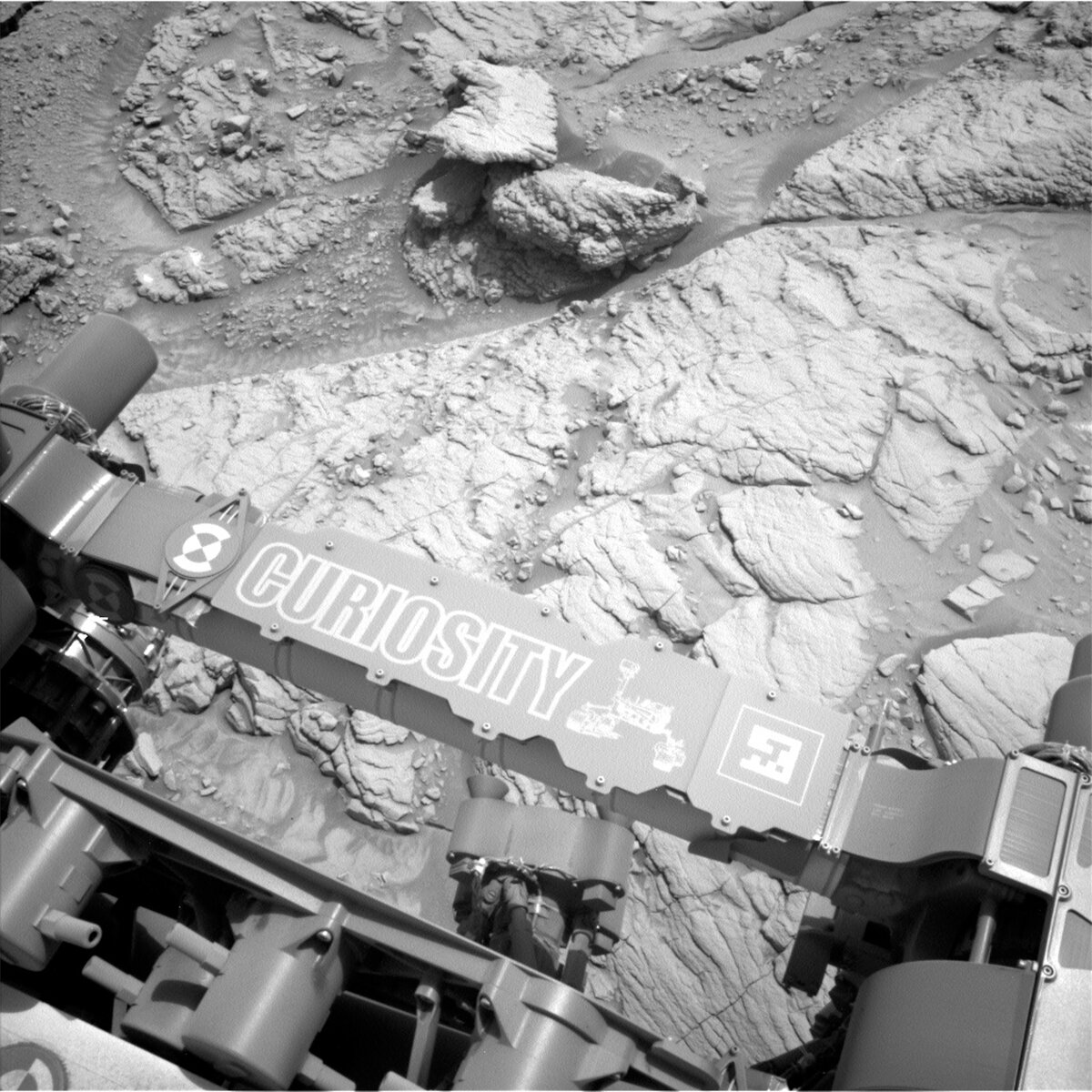3 min read

Today was a plan chockful of goodies to cover the weekend! Luckily the rover repositioning mentioned in the previous blog worked and we could safely use the arm in this plan.
We start the rover off right away in the morning on sol 3657 with a very long block of remote sensing, including a Navcam dust devil survey, a ChemCam laser observation of “Cigana,” some long distance ChemCam imaging, a DAN observation, and several Mastcam observations of Cigana, Rafael Navarro, Gediz Vallis Ridge, and some imaging of the rover deck. The rover will take a nice nap until later in the afternoon where the rover will wake up and perform some arm activities. As I’ve blogged before, we’re really having fun challenging our arm Rover Planner trainees and today included two uses of our Dust Removal Tool! We brush and take MAHLI imaging of both the “Lua” and “Rio Jufari” targets, and start the evening with the APXS instrument observing the Lua target. Mid-evening we will replace the APXS on the Rio Jufari target to get an observation of that target. Later that night we will stow the arm to prepare for the next sol’s drive.
Starting out nice and early in the rover’s morning on sol 3658, we take a full 360 panorama around us in the morning light, followed by some imaging of Gediz Vallis Ridge. A bit later in the morning we do some atmospheric monitoring imaging with Mastcam and Navcam, a ChemCam laser observation of the previous sol’s arm target Rio Jufari, some distance imaging with ChemCam, and a slew of Mastcam observations of Saddle Mountain, “Xua,” Lua, and Rio Jufari.
After all that great imaging, the rover will spend the next 4 hours driving! Today I was the mobility Rover Planner, so I was responsible for driving the rover today! In today’s plan we included something we don’t do very often, and that’s what we call the Full MAHLI Wheel Imaging activity, where we use a combination of Mastcam and MAHLI to image our wheels and monitor our wheels for any new damage. We have some requirements to find a spot safe to do this imaging, so a lot of my morning on shift was verifying a good safe spot to perform this activity in. Luckily there was a good spot about 5 meters behind where the rover is, so we back up, run this activity, then start heading back the way we came. We’ll be driving about 45 meters, retracing our steps, and ending near the sand ripple from a few sols ago with hopefully some bedrock in the workspace for the next Rover Planners to play with.
After the drive completes, we’ll take our post-drive imaging block of Hazcams, Navcams, and Mastcams to provide the imaging for the next planning team to use. We’ll take a bit of a nap (after all, 4 hours of driving is a lot!) and later in the evening we’ll take a MARDI image.
The third and final sol of this plan, sol 3659, has an autonomously selected ChemCam target in the morning before sleeping until very early on sol 3660 where we’ll take a slew of atmospheric monitoring images with Navcam and Mastcam. Throughout the plan are our standard environmental monitoring with DAN, RAD, and REMS as well.
Written by Keri Bean, Rover Planner Deputy Team Lead at NASA's Jet Propulsion Laboratory







